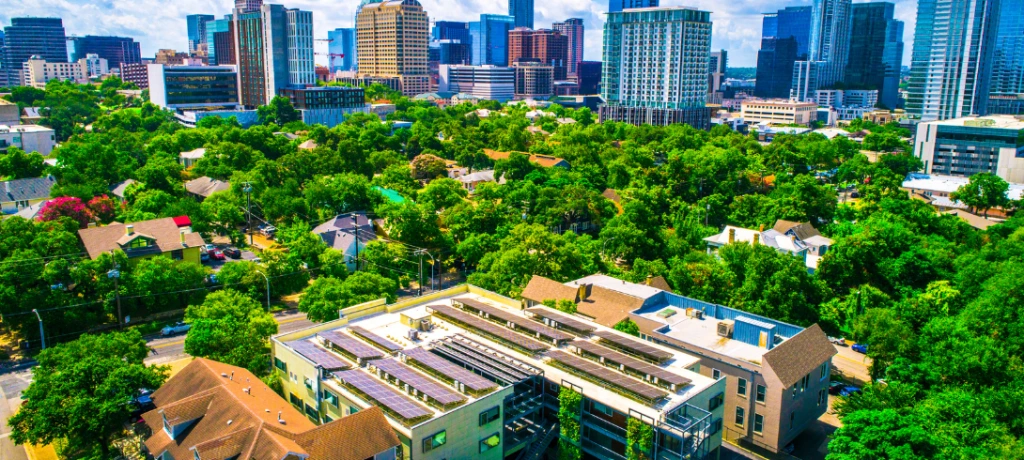In today’s world, homeowners are increasingly looking for ways to reduce their carbon footprint while creating energy-efficient and eco-friendly living spaces. Sustainable renovations are the perfect solution to achieve these goals. By choosing green materials, energy-efficient upgrades, and environmentally conscious designs, you can save money, reduce waste, and contribute to a healthier planet. At Simple Green Energy, we specialize in guiding homeowners through the process of creating greener, more sustainable homes.
Why Choose Sustainable Renovations?
Renovating your home sustainably not only benefits the environment but also enhances your property’s value and reduces long-term energy costs. With the right approach, you can create a space that’s both stylish and eco-friendly. This guide will walk you through practical steps for achieving sustainable renovations, ensuring your home is energy-efficient, environmentally friendly, and cost-effective.

1. Assess Your Home’s Current Energy Efficiency
Before starting any sustainable renovations, conduct a home energy audit to identify areas where you’re losing energy.
2. Use Sustainable Building Materials
When renovating, choose eco-friendly materials that are sustainable, durable, and low-impact.
- Bamboo Flooring: Bamboo is a renewable resource that’s both stylish and long-lasting.
- Recycled Materials: Opt for reclaimed wood, recycled steel, and other upcycled materials.
- Non-Toxic Paints: Choose low-VOC or zero-VOC paints to improve indoor air quality.
Using these materials not only reduces environmental impact but also creates a healthier living environment for your family.
3. Improve Your Home’s Insulation
Proper insulation is key to maintaining energy efficiency during sustainable renovations. Homes with effective insulation use less energy for heating and cooling, leading to lower utility bills.
Cavity Wall Insulation: Filling wall cavities can prevent significant heat loss. Explore cavity wall insulation services.
Loft Insulation: Prevent heat from escaping through your roof by upgrading loft insulation.
Floor Insulation: Insulating your floors can also help maintain indoor temperatures.
Renewable energy sources not only power your home sustainably but also qualify for government incentives in some cases.
Solar Panels: Harness the power of the sun to generate electricity. Solar panels can significantly reduce energy bills over time.
Heat Pumps: Air-source and ground-source heat pumps are energy-efficient alternatives to traditional heating systems.
Wind Turbines: If you have enough land, consider small-scale wind turbines for additional energy generation.
5. Upgrade to Energy-Efficient Appliances
Appliances account for a significant portion of your home’s energy consumption. When undergoing sustainable renovations, replace outdated appliances with energy-efficient models.
Energy Star-Certified Appliances: Look for the Energy Star label to ensure efficiency.
LED Lighting: Replace incandescent bulbs with LED alternatives to reduce electricity usage.
Smart Appliances: Invest in smart devices that optimize energy use, such as programmable thermostats and energy monitors.
6. Water-Saving Fixtures and Systems
Water conservation is another critical aspect of sustainable renovations. Reducing water usage not only helps the environment but also lowers your utility bills.
Low-Flow Fixtures: Install low-flow showerheads, faucets, and toilets to conserve water.
Rainwater Harvesting: Collect and reuse rainwater for irrigation or household cleaning.
Greywater Systems: Recycle water from sinks, showers, and washing machines for non-potable uses.
7. Opt for Green Roofing Solutions
Your roof plays a significant role in your home’s energy efficiency. Consider these eco-friendly roofing options:
Green Roofs: Planting vegetation on your roof can improve insulation and reduce stormwater runoff.
Cool Roofs: Reflective materials on your roof can keep your home cooler in the summer.
Solar Roof Tiles: These innovative tiles combine traditional roofing with solar energy generation.
8. Focus on Smart Home Technology
Smart home technology can make your home more energy-efficient by automating systems and providing real-time energy usage data.
Smart Thermostats: Control your heating and cooling remotely to reduce energy waste.
Smart Plugs: Monitor and reduce energy consumption from plugged-in devices.
Energy Monitoring Systems: Track your home’s energy use to identify opportunities for savings.
9. Maximize Natural Light and Ventilation
Reduce your reliance on artificial lighting and HVAC systems by designing your home to make the most of natural resources.
Skylights: Install skylights to bring in more natural light.
Windows Placement: Strategically position windows to maximize daylight and cross-ventilation.
Blinds and Curtains: Use insulating blinds and curtains to maintain indoor temperatures.
10. Explore Government Grants and Incentives
Many governments offer financial incentives to encourage homeowners to adopt eco-friendly practices. In the UK, schemes like the Energy Company Obligation (ECO) can help fund your sustainable renovations.
Visit Simple Green Energy to learn about available grants for insulation, boiler upgrades, and more.
The Boiler Upgrade Scheme and Renewable Heat Incentive are excellent starting points.
Final Thoughts
Embarking on sustainable renovations is a rewarding journey that benefits both your family and the planet. From energy-efficient appliances to renewable energy solutions, every step you take brings you closer to an eco-friendly home. At Simple Green Energy, we’re here to support you in making your home greener, more energy-efficient, and future-proof.
Start your sustainable renovation journey today with the experts at Simple Green Energy. Let us help you create a home that’s not only comfortable and stylish but also kind to the environment. Explore our services at Simple Green Energy and take the first step toward a sustainable future.
